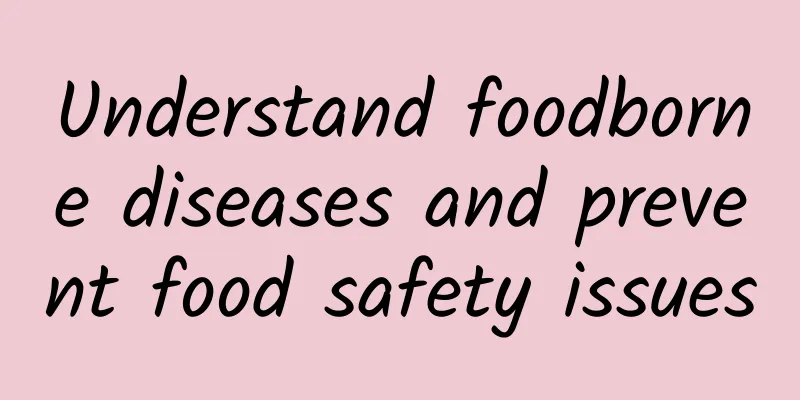Why is it so painful to breastfeed after childbirth? Is there any way to relieve the pain of breastfeeding after childbirth?

|
Generally speaking, pregnant mothers usually breastfeed after giving birth, so breastfeeding after delivery is a very important step, and it is also a process that every mother has to go through. It is painful to breastfeed after delivery, and many mothers are very distressed. So how to relieve the pain of breastfeeding after delivery? Let's take a closer look below! Why does it hurt to breastfeed after childbirth?1. Blocked milk ductsThere are 15-18 mammary ducts in our breasts, and milk flows out of the nipples through the mammary ducts to meet the needs of the baby. But if the mammary ducts are blocked, which is what we often call milk blockage, then the milk cannot pass through and continue to stay in the breasts. Since the baby is still sucking, milk will continue to be secreted. Excessive milk will cause the mammary ducts to expand excessively, causing milk swelling and pain. If the milk accumulation is not treated for a long time and the nipple is damaged, it will easily lead to mastitis. 2. Cracked nipplesLike the belly button, the skin of the nipple is very thin and can be easily broken if you are not careful. However, the nipple is different from the belly button. The belly button can be well protected, but the nipple is for the baby to suck. At the beginning, the new mother has little milk, and the baby will keep sucking in order to get milk. It may be because of long-term sucking or incorrect connection posture. In short, the skin at the nipple can no longer bear it, resulting in nipple cracking. Therefore, the new mother will feel very painful when feeding the baby. 3. Incorrect feeding postureMany new mothers do not know how to adjust their posture when feeding their babies, which results in the baby not being able to breastfeed in the correct posture. Although the baby is still young, he is born with the ability to forage for food and will not stop until he gets the milk. Due to incorrect posture, it is easy to pull the nipple and cause pain. 4. Breast problemsIf a new mother has inverted breasts or short nipples, it will be more difficult for the baby to breastfeed, so more strength will be needed when breastfeeding, and the new mother will feel pain. How to prevent breastfeeding pain1. Pregnancy careDuring pregnancy, pregnant mothers should start to take good care of their breasts. When pregnant mothers find milk crust on their nipples, they should clean them in time. In the last two weeks, pregnant mothers can use warm towels to warm their breasts and massage them appropriately to ensure that the milk passage is unobstructed. If the pregnant mother has nipple defects, they can also be adjusted appropriately during pregnancy. For example, if the nipple is inverted, the pregnant mother can spend about 15 minutes a day pulling and adjusting it to make it easier for the baby to breastfeed. Note: The water for hot compress should not be too hot, and the massage time should not be too long. If the fetus moves violently during the hot compress and massage, the pregnant mother should stop these actions immediately and give the fetus some comfort. 2. Postpartum hot compressSome new mothers start breastfeeding directly in the delivery room, but many mothers start breastfeeding in the general ward. No matter where you are, if conditions permit, apply a hot compress to the breast before breastfeeding to warm the local area, speed up the flow of milk and reduce blockage. 3. Proper breastfeedingWhen starting to breastfeed, the new mother should maintain the correct breastfeeding posture, with the new mother and the baby's abdomen against each other, chest against chest, with the baby's chin tightly under the breast and the baby's mouth covering the entire areola. The breastfeeding time should not be too long, 20-30 minutes is enough. If the time is too long, it is most likely to cause nipple cracks. 4. Pay attention to your dietNew mothers should start to pay attention to their diet in the days before the due date, and try not to eat too greasy food. Colostrum itself is relatively thick, and if you eat too greasy food, it will easily cause blockage of the milk duct. Different new mothers have different feelings about breastfeeding after childbirth. For example, when I started breastfeeding, I didn’t feel pain, but itchy. I had a sense of resistance in my heart, but in order to let my baby eat milk, I also endured this discomfort. Fortunately, I gradually adapted to it later. How to quickly start breastfeeding after giving birthThe so-called opening of milk is the first time you feed your baby: 1. Early contact, early sucking, and early milkingGenerally speaking, after giving birth, the doctor will help the mother to deal with the wound, clean the baby's body, and do a series of examinations. Then, the doctor will put the baby on the mother's chest for skin contact. This is the best time to start breastfeeding the baby. At first, the baby may not be skilled in the movements, but slowly, as the baby sucks vigorously, the mother will secrete prolactin, and colostrum will flow out of the breast. If the mother has a caesarean section, since the abdominal wound is relatively large, she naturally cannot have skin contact with the baby so early, so the mother can use a breast pump to complete the milk production within 1 hour after delivery. 2. Massage stimulationIf you miss the best time to start breastfeeding, you can also use massage to stimulate breast milk secretion. Use a clean towel dipped in warm water, wipe in a circular motion from the center of the nipple to the areola, and apply hot compresses on both sides in turn, each for 15 minutes. In addition, you can also use spiral massage and acupressure massage. Pay attention to the strength of the massage to avoid rubbing the skin. 3. Get enough restMany mothers are severely sleep deprived due to taking care of their children after giving birth, which can also lead to a decrease in milk supply. Therefore, fathers should help mothers as much as possible to take responsibility for taking care of the baby so that mothers have enough time to rest. 4. Correct posture for breastfeedingWhen breastfeeding, you should do the "three sticks", that is, the newborn's abdomen is close to the mother's abdomen, the newborn's chest is close to the mother's chest, and the newborn's chin is close to the mother's breast. This breastfeeding posture helps the continuous secretion of milk. 5. Eat a healthy dietAvoid taking too much tonic food right after giving birth. Pay attention to replenishing water, eating light liquid food that is easily digestible, and maintain the good habit of drinking milk every day. |
Recommend
The benefits of female body fluids for men
The biggest benefit of girls' body fluids to ...
Pregnancy second bar is not obvious
If the second line on the pregnancy test paper is...
Zimperium: Research finds 14% of mobile apps store user data on unsecured servers
App developers often rely on third-party servers ...
What foods can help you enlarge your breasts?
In the past, there was a saying that big breasts ...
What are the folk remedies for treating early external hemorrhoids in women?
Hemorrhoids are anorectal diseases, and external ...
What to do if menstruation is delayed after fitness?
Menstrual problems are very troublesome for women...
What are the symptoms of perimenopause?
Women enter menopause after the age of 45, and th...
Is it necessary to protect the fetus if you are pregnant with polycystic ovary syndrome?
In order to successfully get pregnant, the physic...
The body is getting old quietly, these signs remind you to start anti-aging
Everyone will experience aging, and the most obvi...
Tencent: As of June 2022, WeChat and WeChat's monthly active users will reach 1.299 billion, continuing to grow by 3.8% year-on-year
In the second quarter of 2022, Tencent Holdings&#...
Headaches as a sign of successful conception
Many people experience headaches in the early sta...
What is breast peeling?
We all know that everyone has breasts. Both men a...
Self-report of IVF
My name is Xiao Ming. I am an ordinary primary sc...
Can I use freezing point to remove hair during menstruation?
Summer is the time to show your figure, but when ...









